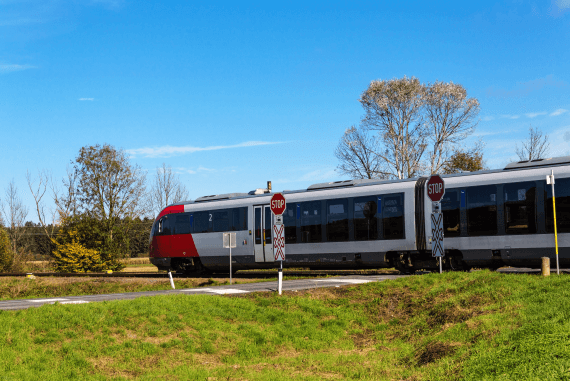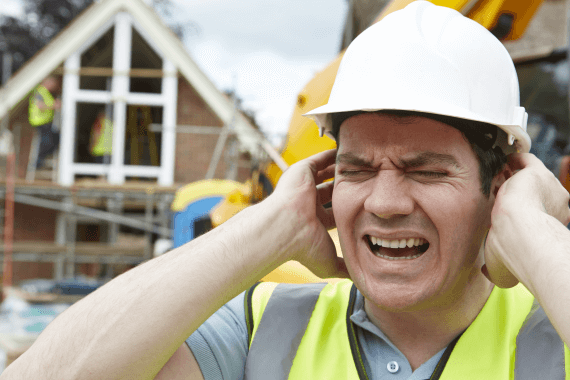- Home ››
- Health and Safety Training ››
- Articles ››
- Health and Safety Issues Regarding Trains and Railway Lines
Health and Safety Issues Regarding Trains and Railway Lines
Introduction

Innumerable dangers exist in the world which pose a danger to the health and safety of people of all ages. Some of these will be impossible or not reasonably practical to eliminate entirely, but most threats can reduced significantly through a combination of robust safety measures and educating people about the dangers that exist.
Training courses and educational instruction can provide adults and children alike with an understanding of the dangers, as well as how to lessen the likelihood of being killed, injured or made unwell from the particular danger or hazard in question.
The majority of health and safety articles on this site cover issues associated with workplace safety, which by its very nature (and due to legislation) will primarily relate to adults, as children are much less likely to be present in a place of work. However, health and safety hazards are present for all age groups as a result of people doing their job.
One such danger is that posed by trains and railway lines, which can not only cause death or injury to people, they also have environmental impacts including noise pollution and air pollution for residents who live nearby. Whilst the transportation of people and goods is a job performed by adults, there still exists a danger to children and those not involved with the actual operation of the train.
Impacts from Collision
The most commonly thought of hazard associated with trains and railway tracks is that of being struck by a train. In the same way that care must be taken and attention paid at all times when crossing a road to avoid being hit by a vehicle, the same respect must also be shown to train tracks.
The fact that trains run so infrequently compared to vehicles on a busy road can cause people to not give the tracks their full consideration when crossing. Just as quieter roads can sometimes be more dangerous than busy ones, due to the fact that people assume that nothing will be coming along it, some people cross train tracks without thinking and looking out for approaching trains. The speed at which trains travel means there is little that the train driver can do to avoid a collision.
The speed at which trains travel, coupled with the relatively low noise they produce in comparison with other vehicles when they travel at that speed, contribute to the danger as it is not so obvious to tell that one is approaching without paying attention and looking.
Children are particularly at risk as they will often be far more focussed on play than looking out for approaching trains, and it is important that parents and teachers impart the dangers from train tracks to children frequently and as strongly as possible.
Level Crossings
There have been many news clips and YouTube videos posted online in recent years showing CCTV footage of near misses from level crossings, as motorists and cyclists try to nip through the barriers before the train arrives. This impatience has resulted in many deaths across the world, not only to the drivers of vehicles but also for their innocent passengers.
Many accidents and injuries are caused by people risking their health and safety and that of others too in order to save a few minutes of time. In both your personal life and in whatever it is you do for a profession, it is vital to keep in mind that it is far more preferable to take a bit longer doing a job in order to stay safe. This can be especially true in the case of performing repetitive tasks, where overconfidence and a switching off of concentration may result in a serious accident. As we have already seen in this article, avoiding complacency is a key component of preventing accidents from occurring.
Falling From Bridges
Many railway lines have foot bridges over them to allow people to cross safely. The chances of accidentally falling off these onto the tracks below are low, as many will have railings and other forms of barriers to prevent this, but care still needs to be taken, especially if these preventative barriers are damaged and have sections missing. Again, children are most at risk as they may climb or play on and amongst these barriers and fall off or through them.
These bridges also pose a threat to those working on them, such as performing maintenance for example. Suitable working at height training may need to be provided before any work takes place.
Noise
Although not creating a danger of death or serious injury like an impact with a train or a fall from a bridge will cause, another consideration that can affect the mental health and wellbeing of residents is the issue of noise from trains.
Those living beside railway tracks or next to stations can be disturbed as trains rumble past or sound their horns. Whilst many will get used to the sounds in a similar way to how most people living under flight paths get used to the noise from aircraft, others will suffer stress and tiredness from disturbed sleep and general anger from hearing the trains every day.
Although very little can be done about it, aside from potentially getting rules put in place to avoid sounding whistles or a reduced speed limit for trainings as they pass through the area, it is a potential issue that needs to be taken into consideration when viewing potential property purchases, as you may find that it affects you more than you may think it will.
Conclusion
The above are just some of the main hazards associated with trains, in terms of how they can impact the safety and well-being of everybody, especially children.
Whilst health and safety dangers in the workplace can be reduced by conducting risk assessments and taking proactive measures, which includes safeguarding visitors and members of the public who may be affected by the activities of the company. When it comes to health and safety regarding trains, the primary method of ensuring people stay safe is through teaching them of the dangers and keeping alert at all times when near a train track or station.

